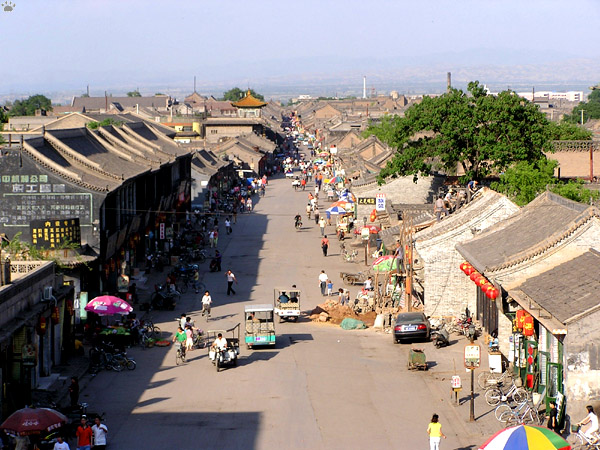
City of Pingyao, Shanxi.
Part 11. The Northwest
As you travel across the Huang He river from Central China into the hills of the Northwest, the most striking change is the loss of color.
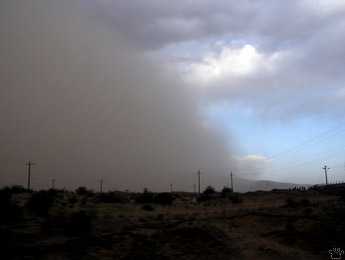
Approaching sandstorm, Nei Mongol/Ningxia border. |

Hwang He River, Nei Mongol/Shanxi Border. |

Yinchuan, the capital of Ningxia Autonomous Region. |
Northern Shaanxi, Shanxi, Ningxia and much of Nei Mongol were once covered by forest/grassland mosaic, but for the last few centuries desert has been steadily encroaching on these semiarid lands. Overgrazing, ineffective irrigation, and total deforestation have created conditions similar to the Dust Bowl era on the Great Plains of North America in the early 20th century. Now this grey-yellow plateau is permanently blanketed in industrial smog mixed with coal dust and flying sand. The desert is now less than 200 miles from Beijing. |
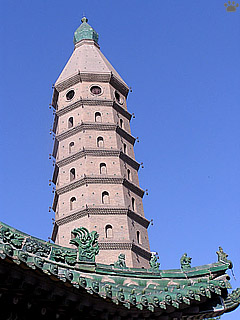
Ming Dynasty pagoda, Yinchuan, Ningxia. |
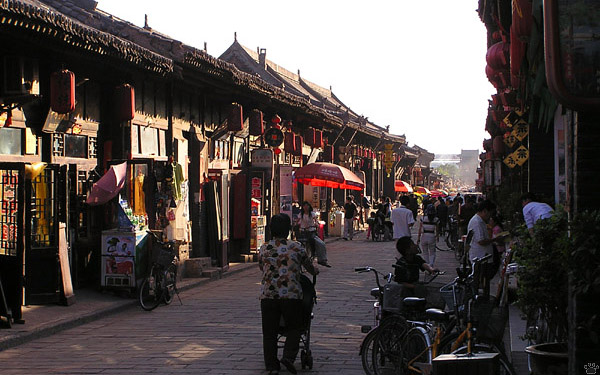
City of Pingyao, Shanxi. |
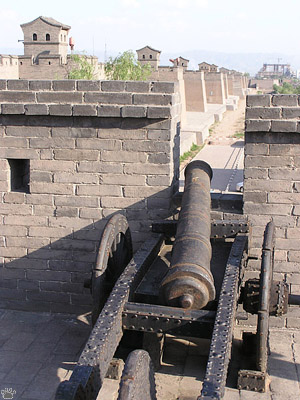
City walls, Pingyao. |
There is still a lot of interesting places to see in that part of the country. The most popular with tourists is Pingyao, a small, well- preserved city surrounded by intact Ming Dynasty walls. No building inside the walls is less than 100 years old. |
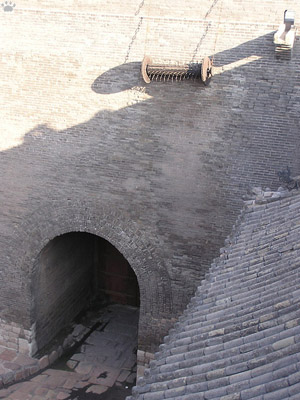
In Chinese fortifications, gates are the strongest part, not the weakest. |
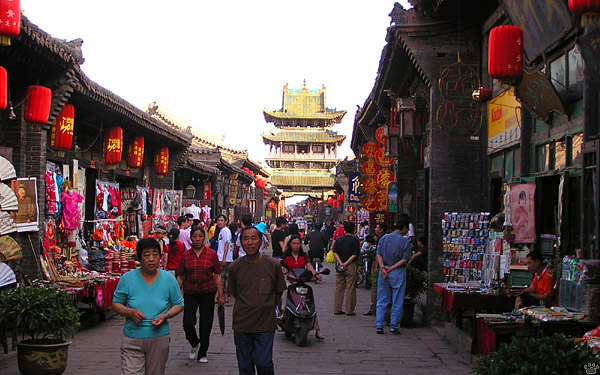
City of Pingyao, Shanxi. |
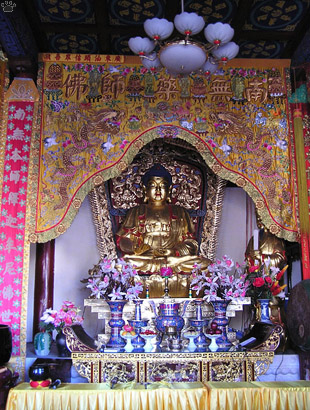
Streetside shrine, Pingyao. |
Pingyao is one of the few places that managed to absorb the onslaught of tourist hordes and remain genuine - probably because the city was originally designed to be full of life and commerce. |
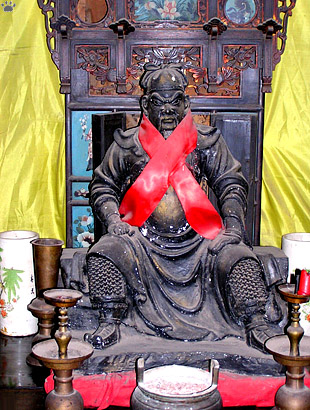
Streetside shrine, Pingyao. |

Hotel, Pingyao. |
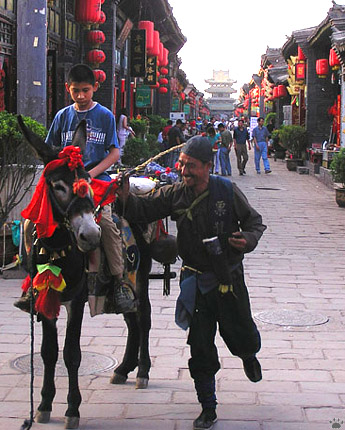
Street photographer, Pingyao. |
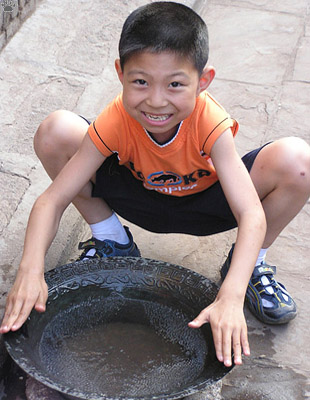
Magic bowl, Ming Dynasty. Rubbing the handles makes the water "dance",
probably by producing infrasound waves. Pingyao. |
The city still serves its medieval function - providing farmers with supplies and handicraft. There are also hundreds of small hotels for tourists and merchants, and cute little restaurants. |

Shoe master with an apprentice. Some workshops have been in operation
for over 300 years. Pingyao. |
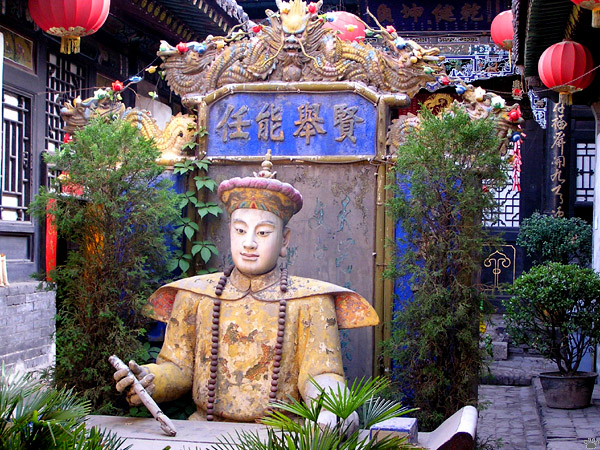
Memorial to people of learning, Pingyao. |
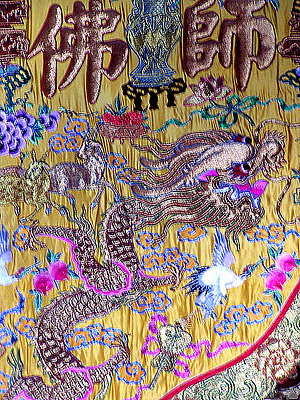
Ming Dynasty textile, Pingyao. |
Pingyao has about two dozen museums, including the Museum of Imperial Exams. China has had a standard exams system not unlike the SAT for almost 2,000 years. Some old houses have also been turned into beautiful museums. |
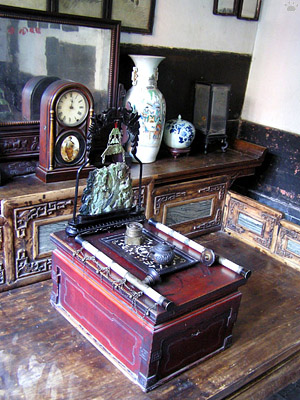
Opium smoking set, Qing Dynasty. |
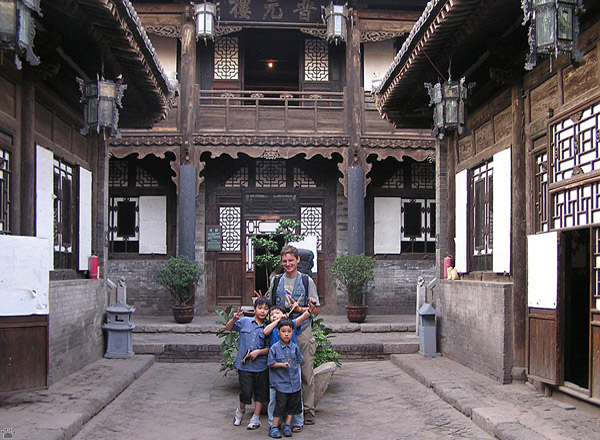
House of a rich merchant, Qing Dynasty, Pingyao. |
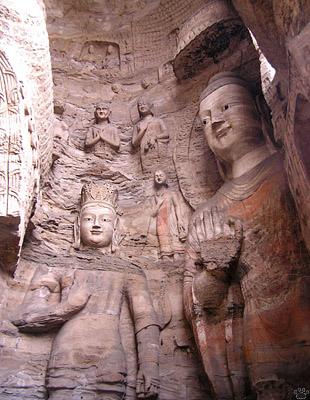
Yungang Caves, Shanxi. |
In the northern Shanxi, near the city of Datong, are the famous Yungang Caves, mostly carved in AD 460-500. It is one of the three great Buddhist cave complexes of China. |

View up, Yungang Caves. |

View of Yungang Caves from the outside. |
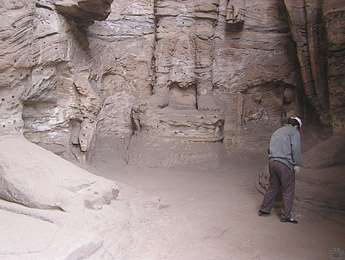
Caretaker at the feet of two giant Buddha statues, Yungang. |
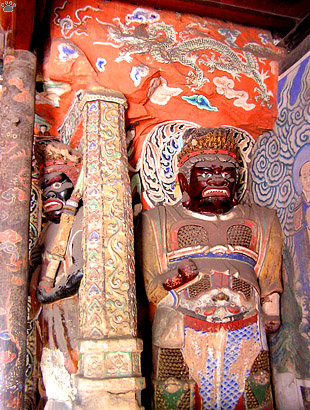
Guardian statues, Yungang Caves. Note coal dust covering them. |
The caves survived numerous robbers (including some early Western explorers), quakes, storms and the Cultural Revolution pretty well, but now are being destroyed by coal dust from nearby mines. |
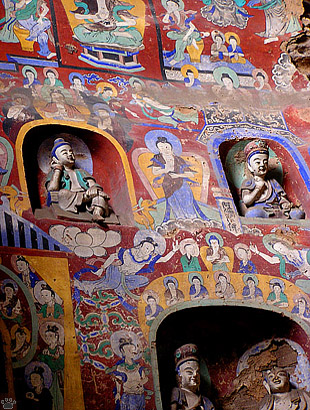
Frescoes, Yungang Caves. |
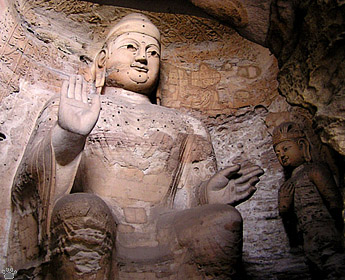 |
 |
| Yungang Caves. |
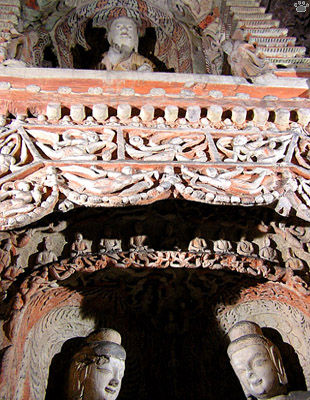
Detail, Yungang Caves. |
The caves stretch for about 1 km. There are 53 grottoes, with about 1,000 niches, 51,000 statues and countless frescoes. The largest statue is 17 m (57') high, the smallest is less than 2 cm (3/4"). |
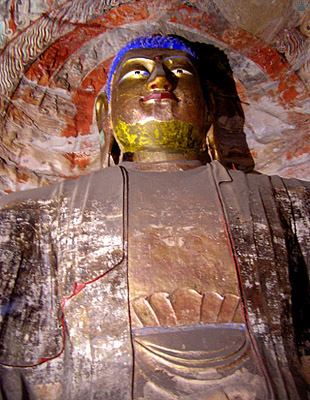
Gilded and painted bronze statue, Yungang Caves. |

Foreign visitors, Yungang Caves. |

Statue, Yungang Caves. |
The chronicles say that over 40,000 people have worked on the caves. Some of them came from as far away as Sri Lanka. |
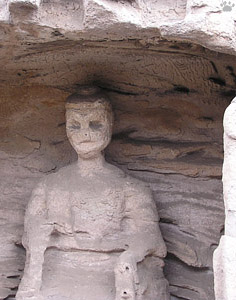
Statue of Death, Yungang Caves. |
 |
| Oriental pratincole (Glareola maldivarum), Yungang. |
| The project took about fifty years to complete. Many statues show Indian, Greek, and Persian influence. |
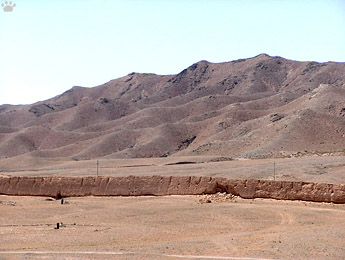
Unrestored section of the Great Wall near Yinchuan, Ningxia. |
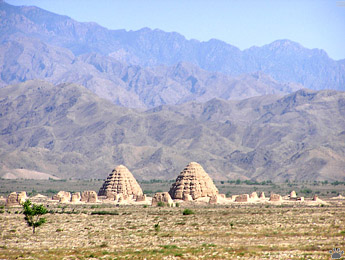
Western Xia tombs (AD 990-1227), near Yinchuan, Ningxia. |

Restored section of the Great Wall, Hebei Province, 1993. |
The Great Wall once separated China from the barbarian lands beyond. Now the Chinese are the majority in all provinces. In Nei Mongol (Inner Mongolia Autonomous Region) and in the three Manchu provinces the native cultures are all but extinct. |
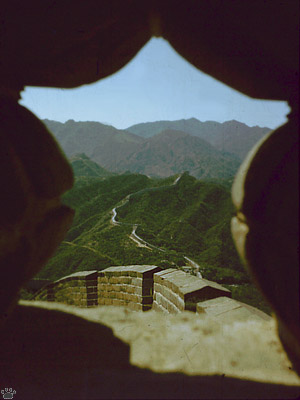
View of the Great Wall from a watchtower, Hebei Province, 1993. |

Fake Genkhis Khan's mausoleum, built by the Chinese Government in 1954, Erdos City, Inner Mongolia.
Part 12: The Heartland
Back to Part 10
Home
|